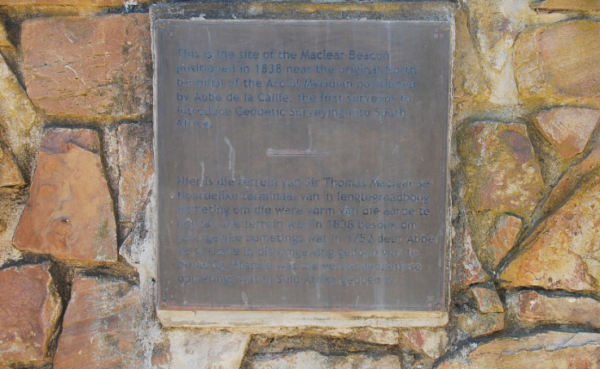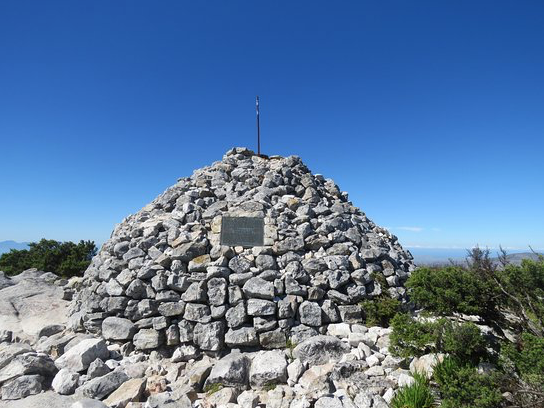Astronomer Sir Thomas Maclear built a large cairn that marks the highest point of Table Mountain in 1865. Called the Maclear Beacon, the cairn was actually constructed to assist in measuring the curvature of the earth.
“This important astronomical calculation was undertaken by the Irish-born Maclear, a medical doctor who was also a keen astronomer. He was made a Fellow of the Royal Society of Astronomers and served as Her Majesty’s Astronomer and Director at the Royal Observatory at the Cape of Good Hope from 1833 to 1870,” according to the Table Mountain Aerial Cableway.
“One of Maclear’s most important tasks was to remeasure the Abbot Nicolas de Lacaille’s Cape Arc of Meridian. Due to the influence of the magnetic field of the mountains around the Cape on his instruments, Lacaille’s measurements in the mid-18th century had indicated that the Earth would be pear-shaped; the British Admiralty, however, wanted this enigma solved and Maclear set to work in the 1830s already,” records the Cableway.

The beacon was built in 1865 at 1086 metres above sea level – which is Table Mountain’s highest point. It was established as a triangulation station to help measure the curvature of the earth.
“The highest point on the mountain is 19 metres higher than the Upper Cable Station and on the furthest side of the cable station. The beacon is still used by cartographers,” states Cableway records.
Maclear was knighted in 1860 for his achievements in astronomy, and died in 1879 in Mowbray, Cape Town.
“There is a 45-minute walk from the Upper Cable Station to Maclear’s Beacon, spanning the length of the mountain, approximately three kilometres. It is advisable to wear comfortable walking shoes to do the walk,” the Cableway shared on their Facebook page.
Picture: Twitter

